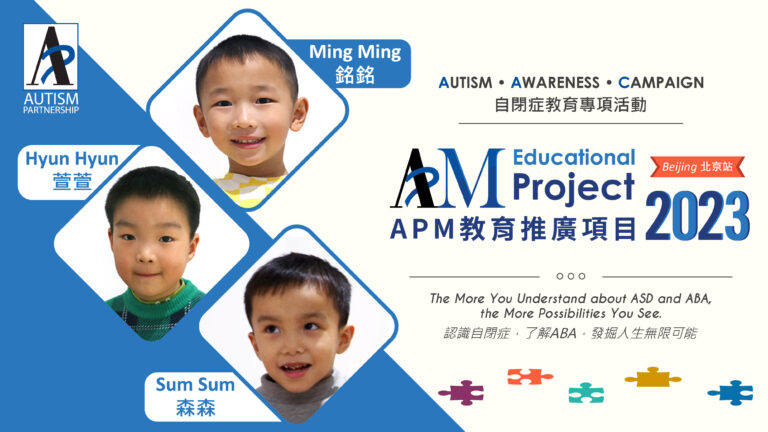
Some researchers suggested that deficits in social communication and interaction found in individuals with ASD could be explained by impaired Theory of Mind (ToM) development (Broekhof et al., 2015). According to Premack and Woodruff (1978), ToM is the ability to understand mental states, for instance desires, beliefs, intentions to oneself and to others, and the ability to understand what others believe in a given situation and predict their behaviors. It involves making sense of others’ emotions, knowledge, and thoughts when navigating the social world.
‘Mind-reading’ is a term that is relevant to ToM. It refers to one’s ability to understand how others might interpret events and their feelings (Howlin et al, 1999). Before we understand how individuals with ASD are hindered in mind-reading and how to provide support, we need to know the significance of mind-reading and the developmental stages of ToM.

First and foremost, mind-reading helps us make sense of social behaviors and the human world as it facilitates forming explanation of human behaviors and predicting their next move. Furthermore, it is an essential component for understanding communication, particularly on communication intention. When decoding speech, it is not possible to only take words literally. Rather, we need to go beyond what we hear and to hypothesize the mental state of the speakers. Mind-reading also allows speaker to monitor the informational needs of his/her listener. In other words, it helps the speaker judge what the listener knows and does not know so that additional information or rephrasing can be provided in order to make the listener understands the communicative intention. By the same token, mind-reading also plays a significant role in deception, empathy, self-reflection, and persuasion/changing a person’s mind (Howlin et al, 1999).
Developmentally speaking, typical developing children are aware of the differences between things in the world and thoughts on the mind by the age of 2 (Astington & Jenkins, 1999). Howlin and colleagues (1999) further suggested that 3-to-4-year-old children, who are developing typically, understand that emotion can be caused by situations e.g., pleasant situations make you happy and unpleasant situations make you sad, and desires e.g., we are happy when our desires are fulfilled and vice versa. Happé and Frith (2014) proposed that by the age of 4 to 5, the notion of false belief begins to develop. and higher order of mind-reading skills, which are necessary for understanding complex mental states begin to merge, and mind-reading skills become more elaborated around the age of 6 (Vetter et al, 2013).

In the next article, I will examine ‘mindblindess’ in ASD and relate the framework proposed by Howlin and colleagues (1999) when discussing how to teach children with ASD to mind-read.
References
| Astington, J. W., & Jenkins, J. M. (1999). A longitudinal study of the relation between language and theory-of-mind development. Developmental Psychology, 35(5), 1311–1320. |
| Broekhof, E., Ketelaar, L., Stockmann, L., van Zijp, A., Bos, M. G., & Rieffe, C. (2015). The Understanding of Intentions, Desires and Beliefs in Young Children with Autism Spectrum Disorder. Journal of Autism and Developmental Disorders, 45(7), 2035–2045. |
| Happé, F., & Frith, U. (2014). Annual research review: Towards a Developmental Neuroscience of Atypical Social Cognition. Journal of Child Psychology and Psychiatry, 55(6), 553–557. |
| Howlin, P., Baron-Cohen, S., & Hadwin, J. (1999). Teaching Children with Autism to Mind-Read. West Sussex: John Wiley & Sons Ltd. |
| Premack, D., & Woodruff, G. (1978) Does the Chimpanzee Have a ‘Theory of Mind’? Behavioral and Brain Sciences, 4, 515-526. |
| Vetter, N. C., Leipold, K., Kliegel, M., Phillips, L. H., & Altgassen, M. (2013). Ongoing Development of Social Cognition in Adolescence. Child Neuropsychology, 19(6), 615–629. |

Every little life is a special present for a family. From the time a baby is born, parents journey through lots of highs and lows, wishing for their child to grow up with a big smile, make great friends, find their own way in a job they love, and create a happy family. However, for […]

Parenthood is a journey filled with unexpected twists and turns, challenges, and moments of profound joy. For Adam’s father, the discovery that his son, Adam, was on the autism spectrum marked the beginning of a unique chapter in their lives. This is the story of a father’s realization, acceptance, and the unconditional love and strength […]

Autism Spectrum disorder can be diagnosed as early as 18 months. Research shows strong evidence on how effective Applied Behavior Analysis (ABA) can help children with Autism. It helps to deal with children’s challenging behaviors such as inattention, aggression, self-stimulation, etc. Howard, et al (2005) conducted a study to compare the effectiveness of 3 treatment […]
Please share to let more people learn about ASD and ABA therapy:
AP holds the belief that with quality Autism Partnership Method (APM) treatment, individuals with autism should reach their fullest potential and achieve the greatest degree of independence and highest quality of life possible.
Sign up now to get ABA and Autism related news delivered to your inbox. Enter your email to get started
Hong Kong Center
Kowloon Center

All information received will always remain confidential. We will contact you as soon as we review your message. Thanks